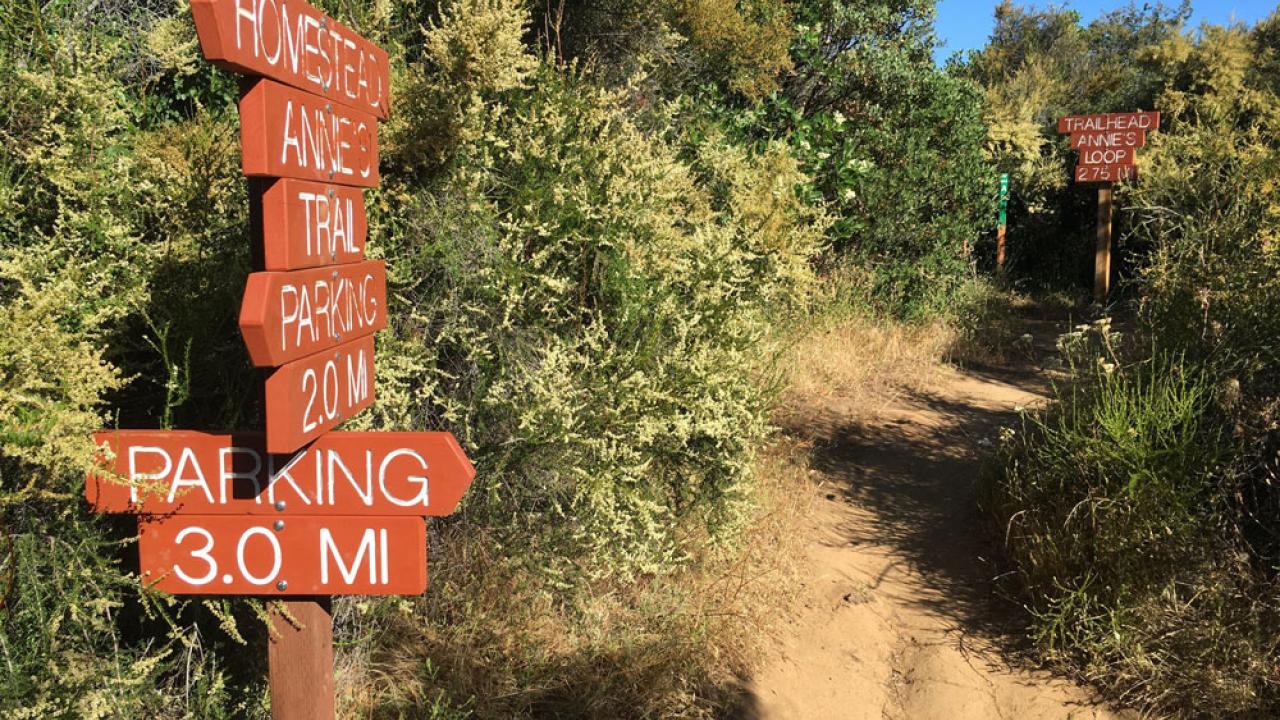Quick Summary
- Official warning: “Hot summer conditions are dangerous for hiking in wildlands”
- Cautionary tale from the last heat wave, when first-responders stationed themselves at the canyon, supporting dozens of hikers
- But help like that will not always be so close by, so you must “know your own limitations”
Updated 5:30 a.m. Aug. 16: The National Weather Service has extended an excessive heat warning for the northern Central Valley and foothills until 10 o’clock tonight. The warning zone takes in Stebbins Cold Canyon Reserve, where high temperatures are forecast at near 101 degrees today, 91 Saturday (Aug. 17), 83 Sunday (Aug. 18) and 88 Monday (Aug. 19). The reserve’s website cautions: “Hot summer conditions are dangerous for hiking in wildlands. High risk of fire and heat illness.”
Updated 1:25 p.m. Aug. 14: The National Weather Service has issued an excessive heat warning for most of Northern California through 8 p.m. Thursday (Aug. 15). The Stebbins Cold Canyon Reserve website cautions: “Hot summer conditions are dangerous for hiking in wildlands. High risk of fire and heat illness.” Predicted high temperatures at Stebbins are 102 degrees today (Aug. 14), 104 Thursday (Aug. 15), 99 Friday (Aug. 16) and 89 Saturday (Aug. 17).
The weekend of July 27-28, when temperatures at Stebbins Cold Canyon Reserve reached 105 degrees, offers a cautionary tale from Solano County first-responders who stood by at the canyon in case of emergency.
Members of the county search and rescue team and the Vacaville Fire Protection District took on the volunteer duty, said Kevin Ives, assistant coordinator of search and rescue, who was among the weekend crew at the popular hiking destination near the south end of Lake Berryessa.
KEEPING TRACK
Stebbins Cold Canyon Reserve managers advise hikers: Check the weather, carry lots of water (at least 1 gallon per hiker) and turn around if you think the heat is getting to you. But how do you decide when to turn around on a loop trail? If you think you’ve gone halfway or more, you might decide to press on. Many times, though, people have not gone as far as they think they have, and turning around would have been a better decision.
So, how do you know how far you’ve gone? With GPS tracking on your smartphone, on a new app developed by UC Davis computer engineering students. GPS, of course, works off satellites — so there’s no need for internet service, which is unavailable at Stebbins. But you will need the internet to get the app — so be sure to download it before you go. It’s available at this time for iOS only (search for “Stebbins Cold Canyon” in the Apple App Store, and you’ll need iOS version 11.3 or later).
“We conducted a very successful preventive mission,” he said. No major heat-related incidents, no calls to the California Highway Patrol for rescue by helicopter.
Still, there was plenty for the first-responders to do, not the least of which was handing out more than a case of iced water bottles to hikers coming down the mountain.
“Over two days we met and supported dozens of hikers,” Ives said. “Those most in need from exposure to the extreme heat were provided with fluids and cooling.
“The risk of unprepared hikers developing life-threatening dehydration and heat exhaustion was significant.”
UC Davis is being proactive, too, rolling out a new tracking app (see box) and installing new signs, including some that show gallon-size plastic jugs, indicating the recommended minimum amount of water you should take with you. More distance markers have gone in, and three new information kiosks are coming.
The reserve website makes clear: “UC Davis strongly discourages hiking in very hot weather and in periods of high risk of fire or flood.”
Authorities in Solano County agree. Their agencies are among the first to be called to emergencies at Stebbins Cold Canyon, much of which — including the parking lot and trailhead — lies within Solano County.
Ice water, cold towels and AC
The last weekend in July, the Solano first-responders stationed themselves in the parking lot, warning would-be hikers as they arrived — and standing by to help those who went hiking anyway, if they returned in distress.
“On Sunday, using the OES air-conditioned trailer, five hikers were provided with ice water and cold paper towels to recover from the heat,” Ives said, referring to a trailer from the county Office of Emergency Services.
Ives said two pairs of hikers appeared to start their climb with adequate water supplies, but who returned about 30 minutes later saying the canyon was much hotter than they had anticipated.
Indeed, Ives said, the hiking trails are beautiful but challenging. “Please plan accordingly,” he said. “Bring enough water, dress appropriately for the terrain and do not hike during extreme temperatures.”
Ives also cautioned that everyone needs to maintain responsibility for themselves. “Our volunteers are committed to helping,” he said. Still, he emphasized: Don’t count on public safety personnel to be there every weekend to check on you before or after a hike.
The bottom line: “Rely on yourself to know your own limitations and heat-related conditions,” Ives said. “If you rely on emergency services only and not yourself, it may be too late by the time we find you.”
